



March 13, 2018
NOTICE: This is old news! The latest news is HERE.
It goes without saying that releasing a new product requires a lot of work. Usually this is done by a team of many people working under management. In the case of H-Pi Instruments, it is done by only two people: myself (inventor/designer and programmer) and hired electronics engineer Jordan Petkov of MIDI Boutique. Hardware devices require much more than physical, functional and electronic design. For example, they also require software and firmware development. When these tasks are given to just two people, it can be difficult to estimate how long it will take to achieve a given goal, especially considering improvements and revisions which often take place at unexpected times. In the case of TBX2, a few small but necessary engineering revisions concerning USB-Host MIDI input and battery power, as well as the critical feature of firmware updating over MIDI, require me to move the estimated delivery target from April to June 2018. Of course we will do our very best to meet this new target, which itself remains only an estimate, within reason. The patience of all our customers is much appreciated!
In the mean time, I'd like to share a preview into the software I have been developing for use with TBX2, called Universal Tuning Editor (UTE). This modern 64-bit application will allow users to create tuning tables made specifically to work with any given MIDI controller, and then to upload those tables to TBX2. Whereas CSE and TPXE are both hard-coded to support conventional keyboards and Tonal Plexus keyboards respectively, the main idea behind UTE is to support any arbitrary keyboard geometry. The structure of any keyboard can be defined in an open-standard XML definition file to be read by the application. XML is a text file type, so these files can easily be written by hand, but UTE will also include a graphical user interface for creating keyboards without having to understand how the XML files work (though I'm developing that feature as we speak, it may not be ready for the initial release). In any case, the XML files can be easily made and shared by users.
Here are the keyboards I have created XML files for so far. First, a standard 12-key per octave piano keyboard.

Of course, my first priority was to include the Tonal Plexus.
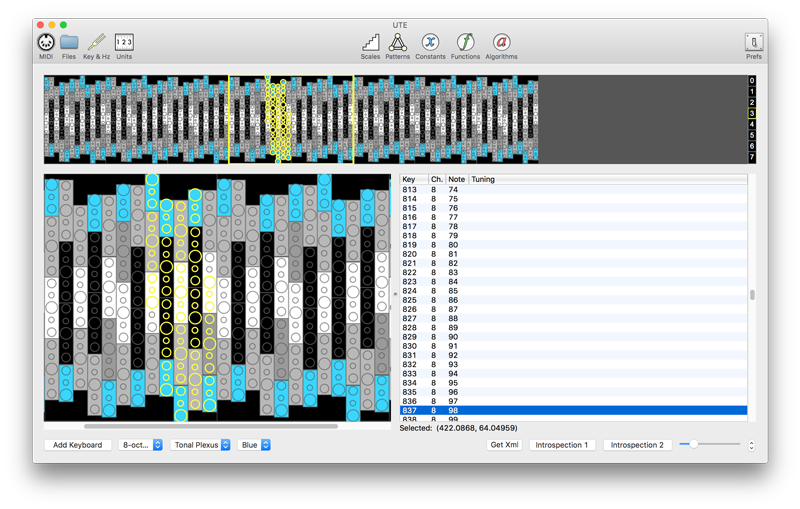
The Axis-64 and Axis-49 hex-key keyboards from C-Thru music (now out of business) are useful for exploring microtunings, so I also made definition files for these. Though the user manuals pointed me in the right direction, sometimes important information was lacking, and I'm grateful to owners of these keyboards who provided needed information through discussion over social media.
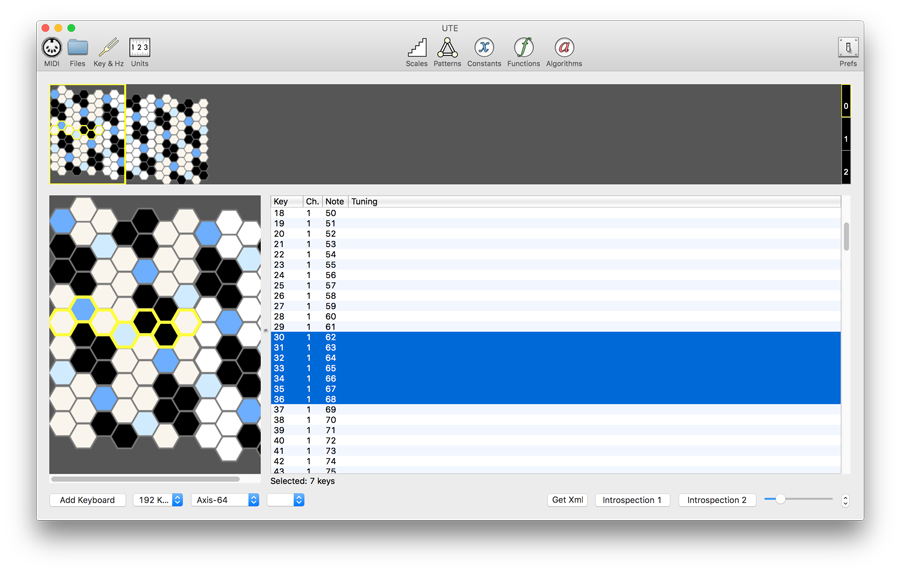
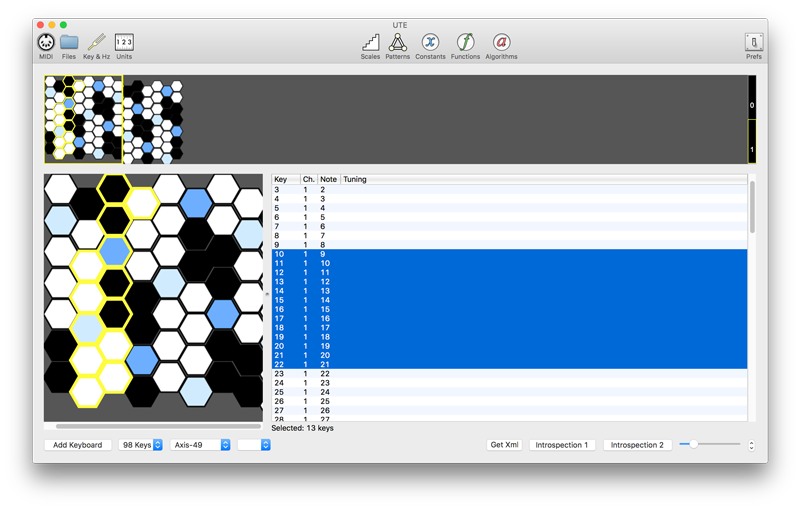
For these keyboards as well as all the examples that follow, an overview does not require so much horizontal space, so UTE display areas will be movable, although I have not implemented that feature yet.
The microzone keyboard from Starr Labs has been available for quite some time, though not many have been made, it's certainly important to include a model of this keyboard in UTE. Documentation on this keyboard was in some cases incomplete, so again I received help concerning its MIDI implementation from owners of the keyboard.
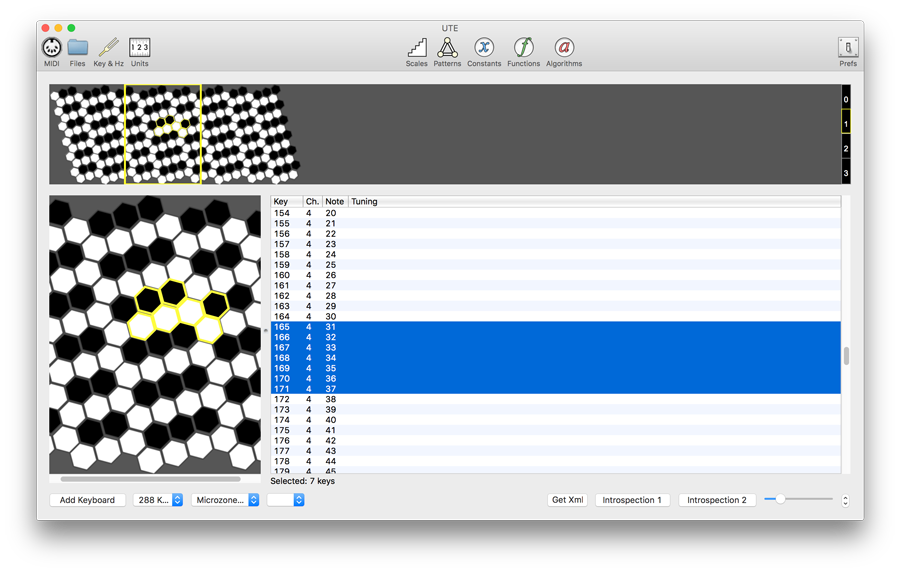
A new and highly anticipated contender in the field of hex-keyboards is the Terpstra keyboard, though it is four years behind delivery schedule, its future owners will benefit greatly from using TBX2 with the Terpstra, which has no native tuning editor. In this case, I was able to get information on the keyboard's MIDI implementation directly from the Terpstra engineering team.
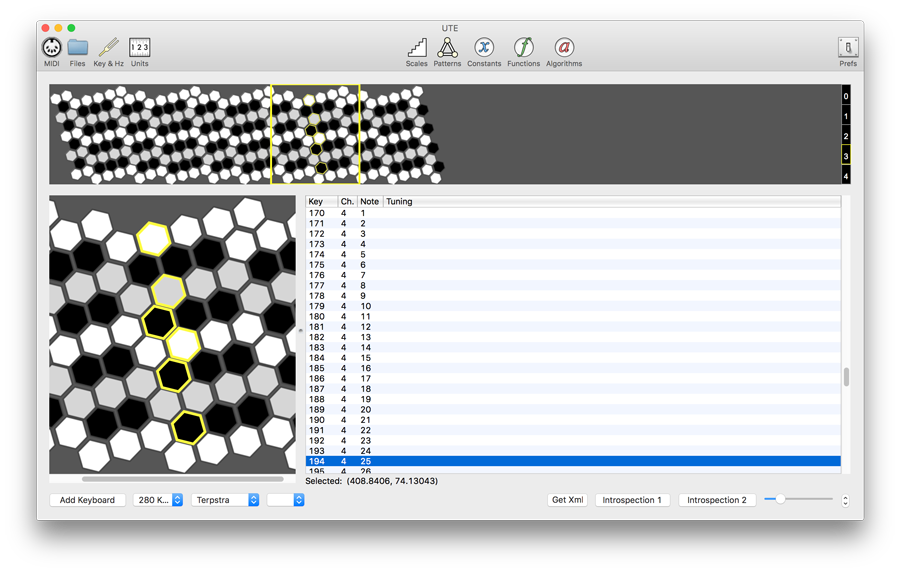
Users of the Linnstrument have also been looking for a tuning editor. The geometry of this keyboard is so simple, after I again received the necessary information about its MIDI implementation from users, it took only a couple of minutes to write the XML definition file and add it to UTE.
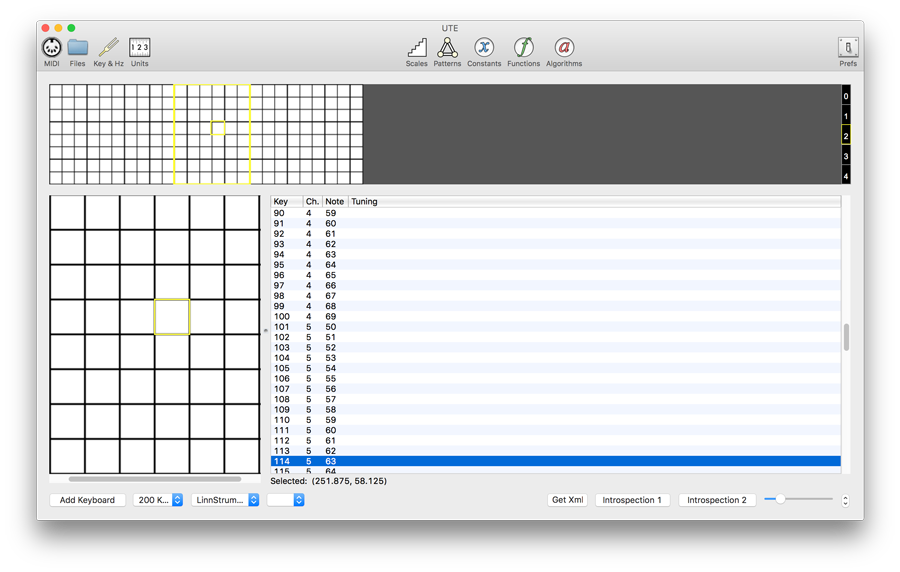
The Megaplex keyboard (of which only 3 exist) will of course also be included, though I have not written a definition file yet, it is similar to the Tonal Plexus.
You may notice that the "Tuning" column in the list at lower right in each window is blank. This is because the tuning features have not yet been implemented in the user interface, though the "tuning engine" as it were is simply waiting to be connected.
Is there something specific you would like UTE to do? Let me know. I'm grateful for your input and support. And once again to everyone who has ordered TBX2, thank you for your patience!
Best Regards,
Aaron
[ Showing 1 entry | Previous entry | Next entry | Show all entries ]